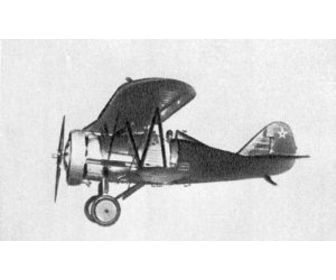Polikarpov I-5

Picture has been licensed under a Creative Commons Attribution-Share Alike license.
Original source: of the work, all available copyright information, and a detailed non-free use rationale. Non-free media information and use rationale for Polikarpov I-5 Description Polikarpov I-5
Original source: of the work, all available copyright information, and a detailed non-free use rationale. Non-free media information and use rationale for Polikarpov I-5 Description Polikarpov I-5
The Polikarpov I-5 was a single-seat biplane which became the primary Soviet fighter between its introduction in 1931 through 1936 after which it became the standard advanced trainer. Following Operation Barbarossa which destroyed much of the Soviet Air Forces (VVS) surviving I-5s were equipped with four machine guns and bomb racks and pressed into service as light ground-attack aircraft and night bombers in 1941.
Made by Polikarpov.
followed the appearance of the Polikarpov I-5, and there was no need
for a designation change following its adaptation, also for the Rotec
R2800.
Purpose-built aeromotors, ie.3
Wing Area Sqm
21
Designer
Nikolai Nikolaevich Polikarpov
Eng 1 Type
9
Range Km
660
Fuel Capacity
165
Upper Span M
10
Eng 1 Kw
358
Introduced
1931
Prop Dia M
3
Bombs
2
Airfoil
Göttingen-436
Number Built
803
Crew
1
Empty Weight Kg
934
National Origin
Soviet Union
Gross Weight Kg
1355
Retired
1942
Primary user
Prop Blade Number
2
Manufacturer
Prop Name
duralumin
First Flight
29
Eng 1 Name
Bristol Jupiter
Max Speed Kmh
278
Origin
Soviet Union
Lower Span M
7
Time To Altitude
96.0
More Performance
10.0
Production Start Year
1931
Guns
60.0
Prime Units
met
Ceiling M
7500
Eng 1 Number
1
Max Speed Note
at sea level
Produced
1931
Length M
7
Category
